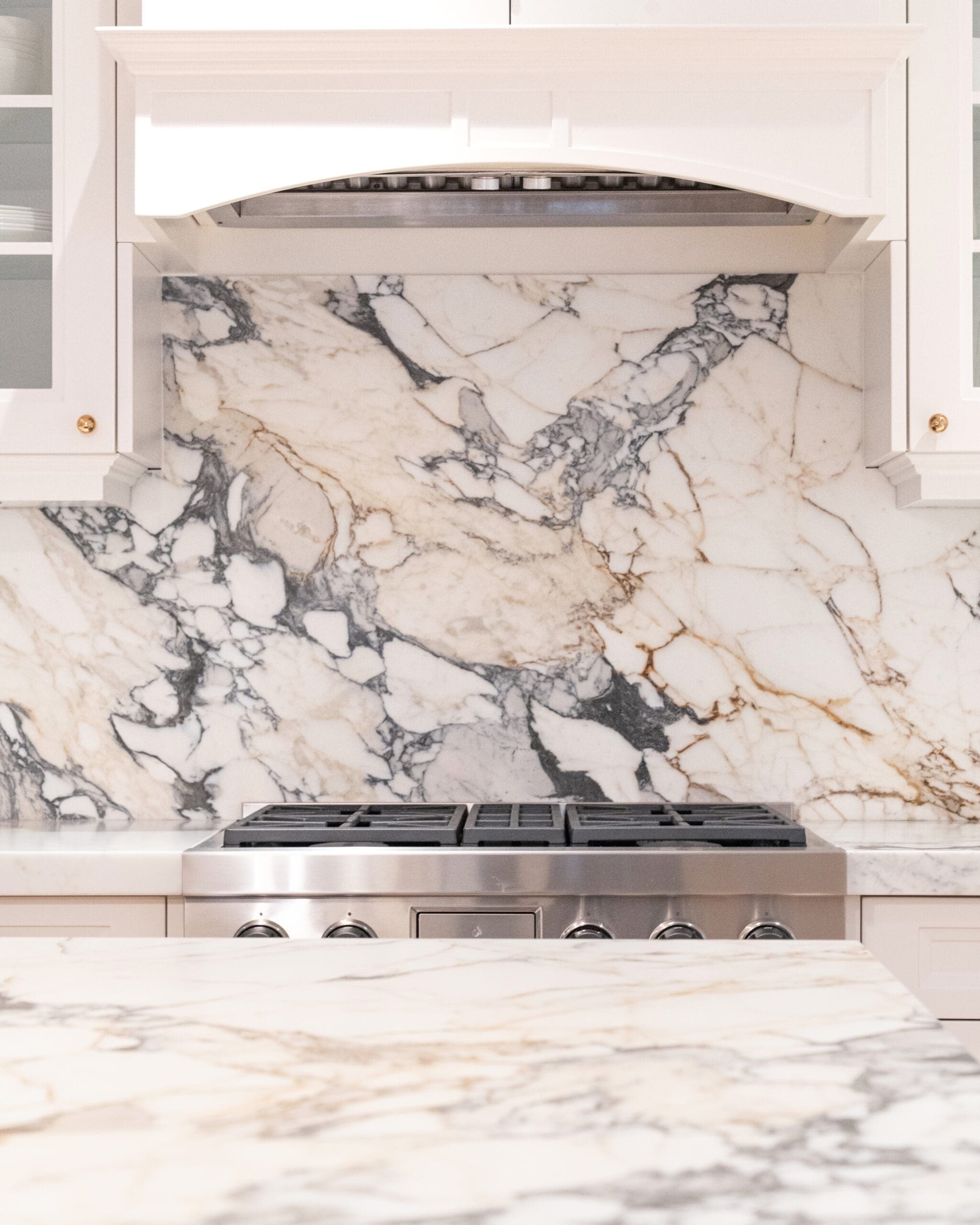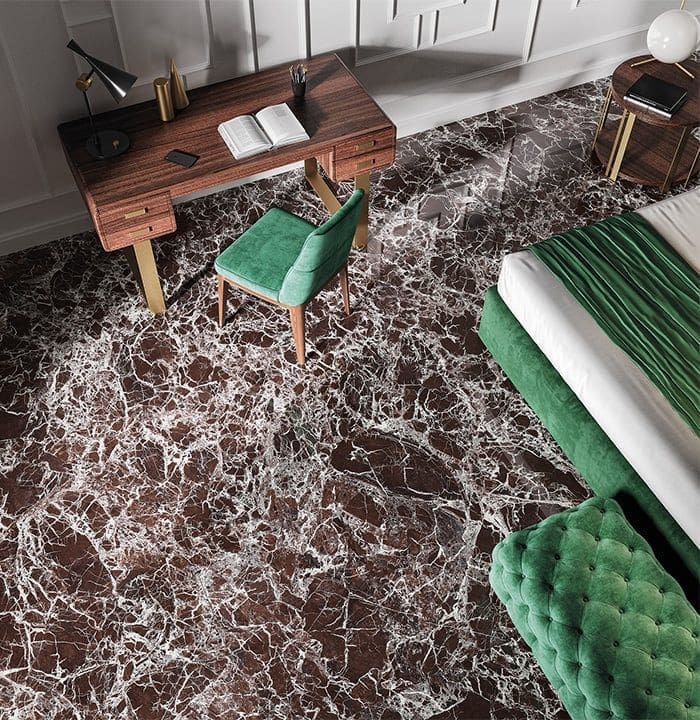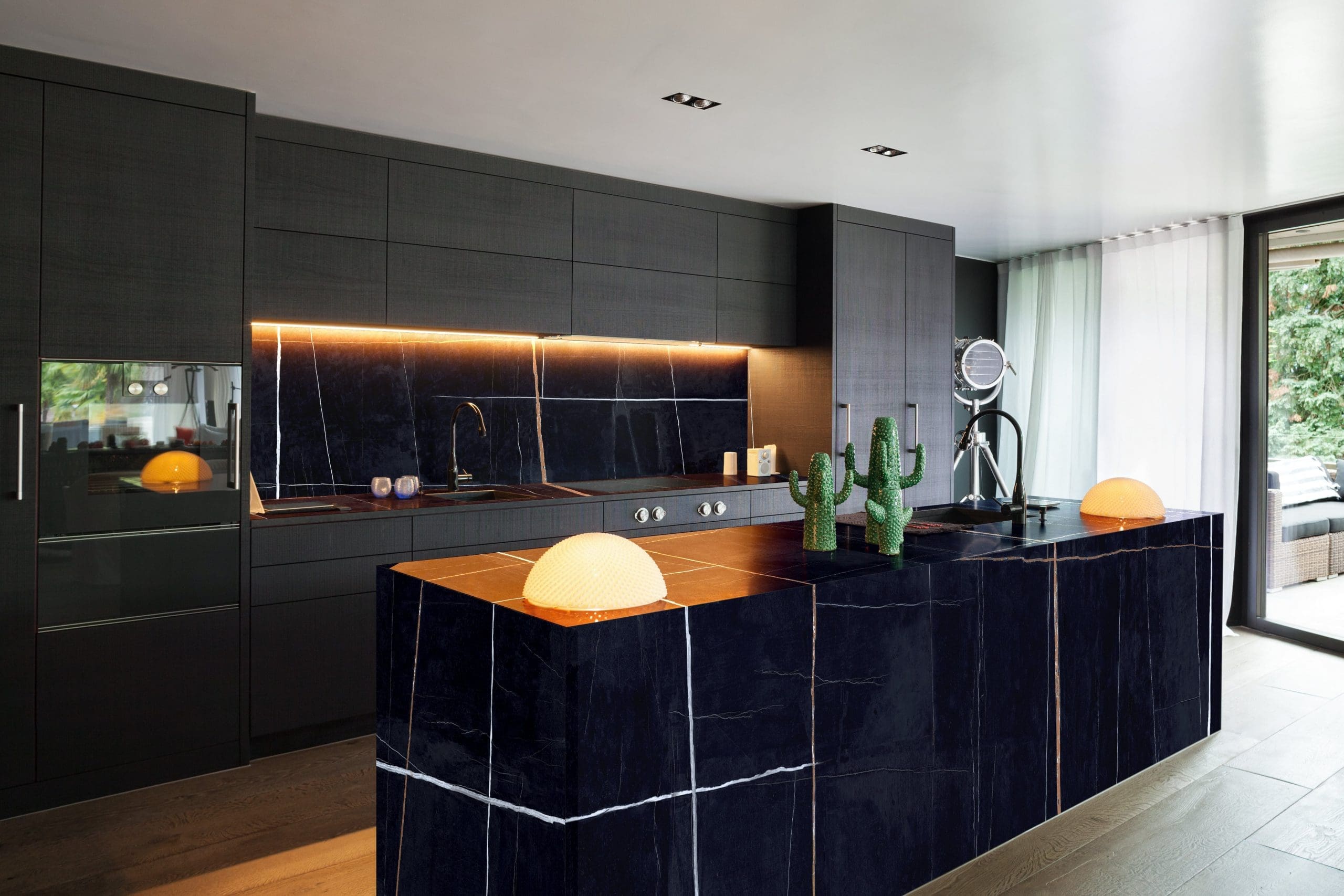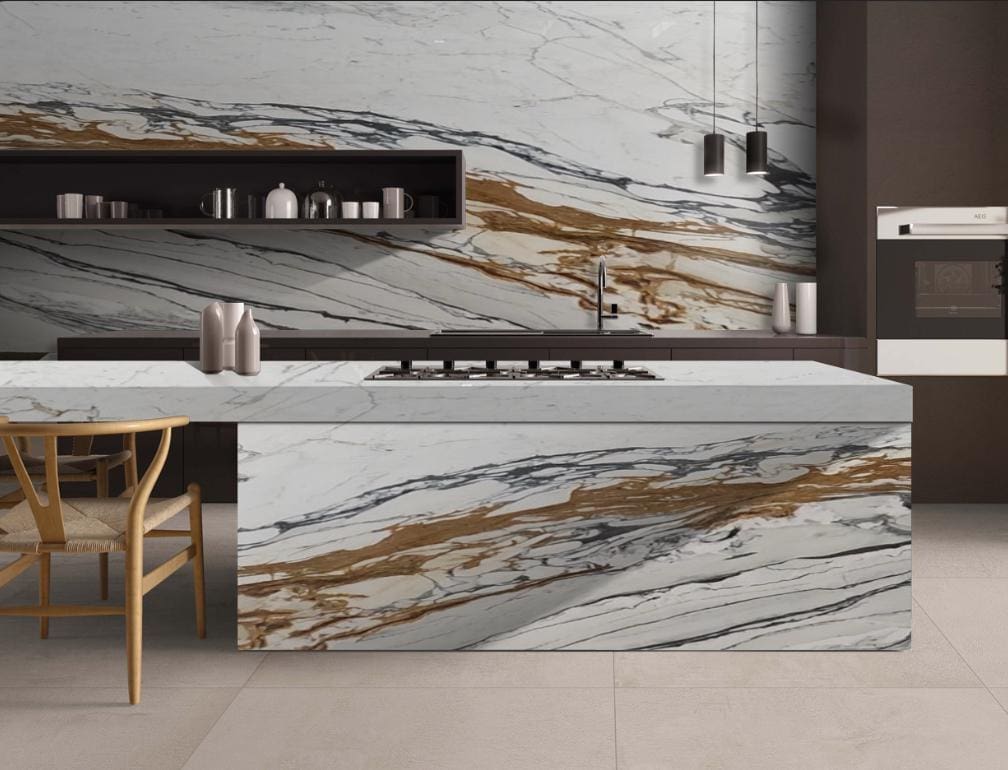Natural marble countertops remain one of the most sought-after luxury features in modern homes, combining timeless elegance with unmatched durability. However, many homeowners hesitate to invest in marble due to common misconceptions about its maintenance requirements. In this comprehensive guide, we’ll separate fact from fiction and provide you with expert insights on proper marble care.
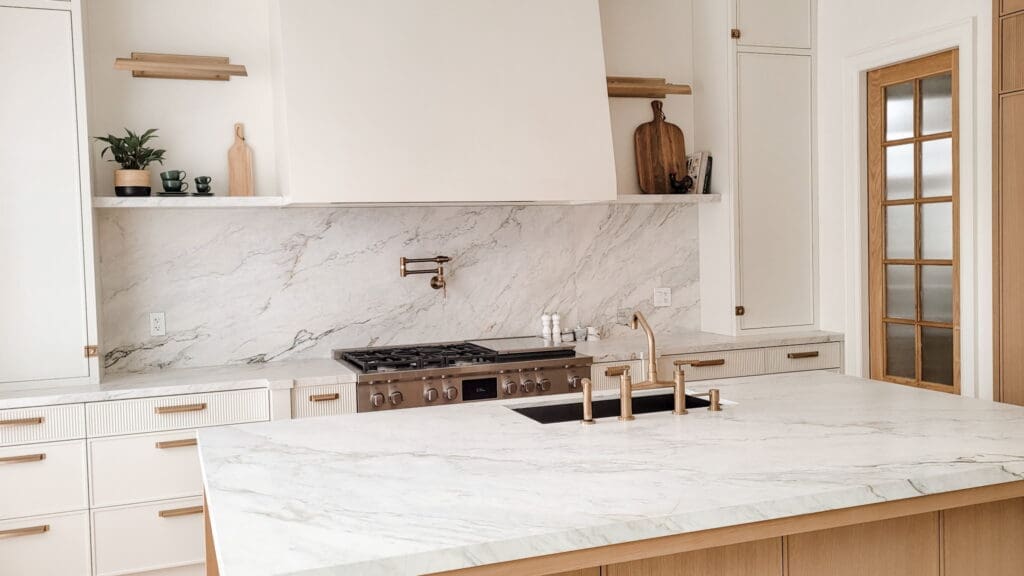
Understanding Your Marble Investment
Before addressing common myths, it’s important to understand what makes marble unique. This natural stone is composed primarily of crystallized limestone, giving it distinct characteristics that influence its care requirements:
- Natural variation in patterns and colors
- Inherent durability with proper care
- Porous surface that requires sealing
- Susceptibility to acidic substances
Myth #1: Marble is Too Delicate for Kitchen Use
The Misconception: Marble is soft and unsuitable for high-traffic areas like kitchens.
The Truth: While marble is softer than granite, it is still a durable material that has been used for centuries in architectural wonders and functional surfaces. With proper sealing and care, marble can handle everyday kitchen activities without issue. Many of our clients have installed marble in their kitchens and with proper maintenance, these surfaces maintain their beauty for generations.
Why Marble Lasts:
- Marble is a metamorphic rock composed of calcite, giving it both strength and visual appeal.
- When sealed, marble becomes resistant to stains and scratches, making it suitable for a variety of applications.
Practical Kitchen Solutions for Long Lasting Marble:
- Use cutting boards: Avoid cutting directly on marble to prevent etching from acidic foods and scratching.
- Clean spills immediately: Especially acidic substances like citrus juices, wine, or tomato sauce.
- Use trivets: Place them under hot pans to prevent thermal shock and discoloration.
Pro Tip:
For homeowners concerned about visible wear, a honed finish (matte) rather than polished (shiny) can help minimize the appearance of etches and scratches.
Transform your kitchen with marble’s timeless beauty—explore our premium marble countertop collection today.
Myth #2: Marble Requires Constant Resealing

The Misconception: Marble needs resealing every few months to stay protected.
The Truth: Resealing frequency depends on usage and the specific type of marble. Experts generally recommend resealing marble every 6-12 months. Over-sealing can even cause buildup, resulting in a hazy surface.
How to Test Your Seal:
- Place a few water drops on the surface
- Wait 10-15 minutes
- If water beads up (like droplets on a waxed car), your seal is intact
- If water gets absorbed into the stone or darkens the stone, it’s time to reseal
Common Test Areas:
- Near the sink (high water exposure)
- Food prep areas (frequent use)
- Edge of countertop (frequent touching)
- Center of island (heavy use area)
Sealing Tips:
- Clean the surface thoroughly before sealing.
- Use a professional-grade marble sealer for the best results.
- Avoid DIY sealers that may leave residue or fail to provide adequate protection.
Pro Tip: For high-traffic areas, check your marble’s seal every six months to ensure optimal protection.
Myth #3: Marble Stains Easily and Permanently

The Misconception: Once marble is stained, the damage is irreversible.
The Truth: While marble is porous and susceptible to staining, most stains can be removed with the right techniques. Understanding the difference between stains and etching is crucial:
- Stains: Occur when substances like wine, coffee, or oil penetrate the stone.
- Etching: Caused by acidic substances reacting with marble’s calcium carbonate composition, leaving dull spots or marks.
Common Stains and Their Solutions
- Oil Stains: Apply a baking soda poultice mixed with water or acetone to draw out the oil.
- Organic Stains (e.g., coffee or wine): Use a hydrogen peroxide-based cleaner.
- Rust Stains: Treat with a specialized rust remover safe for natural stone.
Pro Tips:
- Clean spills immediately to minimize absorption.
- Use coasters, placemats, and trays to reduce contact with potential staining agents.
Repairing Etching:
- Light Etches: Use a marble-safe polishing compound to buff out minor etching.
- Deep Etches: Severe etching may require professional honing or resurfacing to restore the surface’s shine and smoothness.
Key Differences Between Staining and Etching
| Feature | Staining | Etching |
| Cause | Absorption of liquids like wine or oil | Chemical reaction with acids or harsh cleaners |
| Appearance | Dark or colored discoloration | Dull, rough, or whitish marks |
| Prevention | Proper sealing and quick cleanup | Avoid acidic substances and use appropriate tools |
| Repair | Remove with poultice or cleaners | Buff with polishing powder or professional honing |
Need help with stubborn stains? Call our experts for personalized care tips.
Myth #4: Cleaning Marble is Complicated

The Misconception: Marble requires special, hard-to-find cleaning products and techniques.
The Truth:
While marble requires specific care, daily cleaning is straightforward:
- Use pH-neutral stone cleaner
- Clean with soft microfiber cloths
- Avoid acidic or abrasive cleaners
- Regular dust removal prevents scratching
Daily Maintenance Routine:
- Wipe down surfaces with a soft, damp microfiber cloth.
- Use a pH-neutral cleaner specifically designed for natural stone for deeper cleaning.
- Avoid harsh cleaners like vinegar or ammonia, which can etch the surface.
- Dry thoroughly to prevent water spots
- Address spills immediately
Common Mistakes to Avoid:
- Using abrasive scrubbers: These can leave scratches on the surface.
- Allowing cleaning solutions to sit too long: This increases the risk of etching.
- Skipping regular cleaning: Dirt buildup can lead to dullness over time.
Myth #5: Marble Scratches Too Easily

The Misconception: Any small item can scratch marble, making it impractical for everyday use.
The Truth: While marble is softer than granite, it is not as fragile as people believe. Scratches occur from heavy or sharp objects, and many minor scratches can be repaired.
- Use appropriate cleaning tools
- Place protective pads under decorative items
- Install mats in high-traffic areas
- Address minor scratches promptly
Scratch Prevention Tips:
- Avoid dragging items across surfaces
- Use soft-bottom containers
- Clean regularly to prevent grit accumulation
- Consider professional maintenance for high-traffic areas
Repairing Marble Scratches:
- Light scratches: Use a marble polishing powder to buff them out.
- Deeper scratches: Consult professionals for honing or polishing to restore the surface.
Myth #6: Marble Loses Its Shine Over Time

The Misconception: Marble inevitably becomes dull with use.
The Truth: Dullness usually results from neglect or improper maintenance. With regular cleaning and occasional polishing, marble retains its brilliance for decades.
Maintaining Marble’s Shine
- Use appropriate cleaning products
- Schedule regular professional maintenance
- Address etching promptly
- Maintain proper sealing
Professional Marble Care Best Practices
Follow these expert-recommended guidelines:
- Invest in Quality Sealing: A high-quality sealer acts as a protective barrier against stains and scratches.
- Handle Spills Immediately: Prompt cleaning minimizes the risk of etching or staining.
- Use Appropriate Tools: Equip yourself with pH-neutral cleaners, soft cloths, and marble-safe polish.
- Address Issues Promptly: Minor scratches or etches are easier to fix when caught early.
- Consult Professionals: For significant damage or restoration, rely on experienced stone care experts.
Conclusion
Understanding proper marble care helps preserve its beauty and value for generations. By debunking these common myths, we hope to empower homeowners to confidently enjoy their marble surfaces. Remember, proper maintenance is simple when you follow expert guidelines and use appropriate products.
Ready to elevate your home with stunning marble countertops? Visit us today to explore our premium natural stone collection.
Frequently Asked Questions (FAQs)
How often should I seal my marble countertops?
Typically every 6-12 months, depending on use and exposure. High-traffic areas or frequently used surfaces may need more frequent sealing. Perform the water drop test every 6 months to monitor sealer effectiveness.
How can I tell if my marble needs resealing?
Perform the water drop test: Place a few drops of water on the surface and wait 10-15 minutes. If the water beads up, your seal is intact. If the water darkens the stone or creates a wet spot, it’s time to reseal.
What type of sealer should I use on my marble?
Use a high-quality, penetrating (or impregnating) sealer specifically designed for natural stone. Avoid topical sealers as they can create a film that may yellow or peel over time.
Can I use vinegar to clean marble?
No, never use vinegar, lemon, or any acidic cleaners on marble. These will etch the surface and cause permanent damage. Use only pH-neutral cleaners specifically designed for natural stone.
What’s the best daily cleaner for marble?
Use a pH-neutral stone cleaner or mild dish soap diluted with warm water. Always use a soft microfiber cloth and avoid abrasive cleaning tools.
What’s the difference between a stain and etching?
Stains: Discoloration from absorbed substances, usually darker than the stone
Etching: Physical damage from acidic substances, appears as dull or light marks
How do I remove water spots from marble?
For fresh water spots, buff with a soft dry cloth. For stubborn spots, use a specialized marble polishing powder. Never use abrasive cleaners or scrubbers.
How do I remove stains from marble?
The treatment depends on the type of stain:
Oil-based stains: Use a poultice made with baking soda and water
Organic stains: Hydrogen peroxide-based poultice
Rust stains: Professional rust remover designed for marble
Always test treatments in an inconspicuous area first.
Can scratches in marble be repaired?
Yes, most scratches can be repaired:
Light scratches: Professional polishing powder
Deeper scratches: Professional restoration services
The method depends on scratch depth and marble finish type.
What should I do if my marble etches?
Light etching can be polished out with a marble-safe polishing compound. Severe etching may require professional restoration.
Are marble countertops heat-resistant?
While marble can withstand moderate heat, use trivets or hot pads to avoid thermal shock and discoloration.
Is marble suitable for bathrooms?
Yes! Marble is a popular choice for bathroom vanities, shower walls, and flooring, offering slip resistance when honed. Regular sealing is crucial in wet environments.
Can marble be used around a stove or sink?
Yes, but proper precautions are necessary:
- Use trivets for hot pots
- Wipe up water promptly around sinks
- Maintain good sealing in these areas
- Consider edge profiles that minimize water collection
What tools should I avoid when cleaning marble?
Avoid abrasive scrubbers, steel wool, and generic cleaning pads. Use only soft microfiber cloths or stone-safe tools.
When should I call a professional? Contact a professional for:
- Initial sealing
- Deep stain removal
- Scratch or chip repair
- Annual maintenance
- Polishing or honing
- Etching repair
How much does professional marble restoration cost? Costs vary depending on:
- Surface area
- Type of damage
- Location
- Required treatments Contact local specialists for specific pricing.
How do I protect marble during renovations?
- Cover with breathable protective materials
- Avoid plastic covers that can trap moisture
- Protect edges from impact
- Keep construction dust away
Can I place hot items directly on marble?
While marble is heat resistant, sudden temperature changes can cause thermal shock. Always use trivets or hot pads under hot items.
What should I do if I spill something acidic on marble?
- Blot immediately (don’t wipe)
- Flush area with water and mild soap
- Dry thoroughly
- If etching occurs, consult a professional
Ready to Transform Your Space with Marble?
Get in touch today for expert consultation and discover our premium selection of natural stone surfaces. Our specialists are ready to help you choose the perfect marble for your project and provide comprehensive care guidance.

